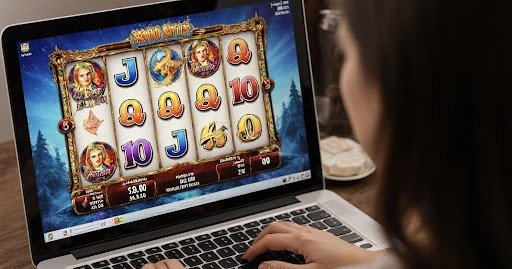The image of casino culture is timeless, fixed in our collective imagination: the green felt, the cinematic tension of a high-stakes hand, the Rat Pack cool of a comped suite. For decades, this was an exclusive export from Las Vegas, Atlantic City, and Monaco. Today, that culture is no longer geographically bound. It has been atomized, filtered, and fed back to us through our smartphones. Now, we can easily create a 22Bet login and place a few bets in a matter of seconds. In the process, it has split into two distinct, powerful forms: the performance of luck and the mechanics of it.
This digital shift is more profound than just influencers posing by the Bellagio fountains. While Instagram and TikTok are saturated with the aesthetics of winning, like the bottle service, the jackpot screens, the penthouse views, this is merely the flashy billboard for a much larger, quieter industry. The true, structural intersection of social media and gambling is the “social casino” market.
It’s an industry projected to hit over $8 billion in 2025, and its most brilliant feature is that it isn’t legally “gambling” at all.
The New High Roller Status
Social casinos are free-to-play mobile or web-based games. You’ve seen them: Slotomania, Big Fish Casino, Chumba Casino. They perfectly replicate the sounds, sights, and functions of real slot machines, poker tables, and blackjack. The crucial difference is that you wager virtual currency. You can’t win real money, and you can never cash out.
Yet, players spend billions of real dollars on them.
The question is, why? If you can’t win, what is being sold? The answer is the core product of social media itself: status.
In a physical casino, a high roller is defined by their willingness to risk immense sums, earning them lavish comps and public recognition. Social casinos have cleverly digitized this ego-driven economy. The real-money purchase, the “micro-transaction,” isn’t a bet; it’s a way to buy more playtime and visibility. Players buy virtual chip packages for $9.99, $49.99, or more, not to win a payout, but to keep playing, to unlock “high-limit” virtual rooms, to join exclusive in-game clubs, and to appear on leaderboards seen by friends and rivals.
This model fundamentally changes the proposition. It removes the financial risk, satisfying the desire for the sensation of play without the consequence of loss. It’s the casino floor repurposed as a competitive social network, and its target demographic is not who you might think. While real-money online sports betting skews young and male, the social casino market is dominated by a different cohort: women over the age of 40. They are seeking community, stress relief, and a sense of progression. These are the same psychological drivers that fuel everything from Candy Crush to Facebook’s “like” button.
Selling the Sizzle, Not the Stake
While this massive social casino economy thrives on mechanics, the other side of the digital coin (platforms like Instagram and TikTok) deals purely in aesthetics.
Here, gambling is presented as a lifestyle, completely decoupled from its statistical reality. Influencers, sometimes in direct partnership with casinos, curate a feed of pure upside. They post the $10,000 “hand pay” jackpot, not the $15,000 in losses that preceded it. The content focuses on the rewards of the risk: the first-class flight, the club, the celebrity chef’s meal.
This functions as powerful, indirect marketing. It normalizes the casino environment and presents the “win” as an attainable accessory to a glamorous life. The Las Vegas Convention and Visitors Authority itself has mastered this, running TikTok campaigns that showcase the iconic, shareable experiences of the city. The gambling is implied, a backdrop to the fun, rather than the cold, mathematical event it truly is.
This performance of luck creates a powerful appetite. The social casino apps then provide a “safe” place to satisfy it. The two sides work in perfect, symbiotic harmony.
The Blurred Line
The billion-dollar question for the real-money gambling industry has always been how to warm up a cold lead. The social casino world has become the answer. It is, perhaps, the most effective, data-rich focus group and marketing funnel ever created.
Research from gaming and addiction studies is unequivocal on this point. While social casinos are “just for fun,” they actively normalize the high-intensity mechanics of modern slot machines. They acclimate players to the sounds, the reward schedules, and the sensory rush of a “win.” They teach the rules of poker and blackjack in a zero-stakes environment.
Crucially, they break the psychological barrier to spending. Studies have shown that a player who makes a micro-transaction in a social casino, buying fake chips just to keep playing, is more likely to migrate to a real-money gambling site. They have already self-identified as someone willing to pay for the feeling of a bet.
The social casino operator gains a player who has been behaviorally primed, whose habits are known, and who has already linked their credit card to the thrill of the game. For the real-money operator, this isn’t a customer; it’s a qualified lead.
This is the true, and largely unseen, intersection. It’s about a sophisticated ecosystem that uses social status to monetize the mechanics of gambling, all while using social media to broadcast a frictionless, curated fantasy of its rewards. The casino, once a physical destination, is now a bifurcated digital experience — one part aesthetic, one part mechanic, and both more profitable than ever.
Keep an eye for more latest news & updates on Forbes Zine!




